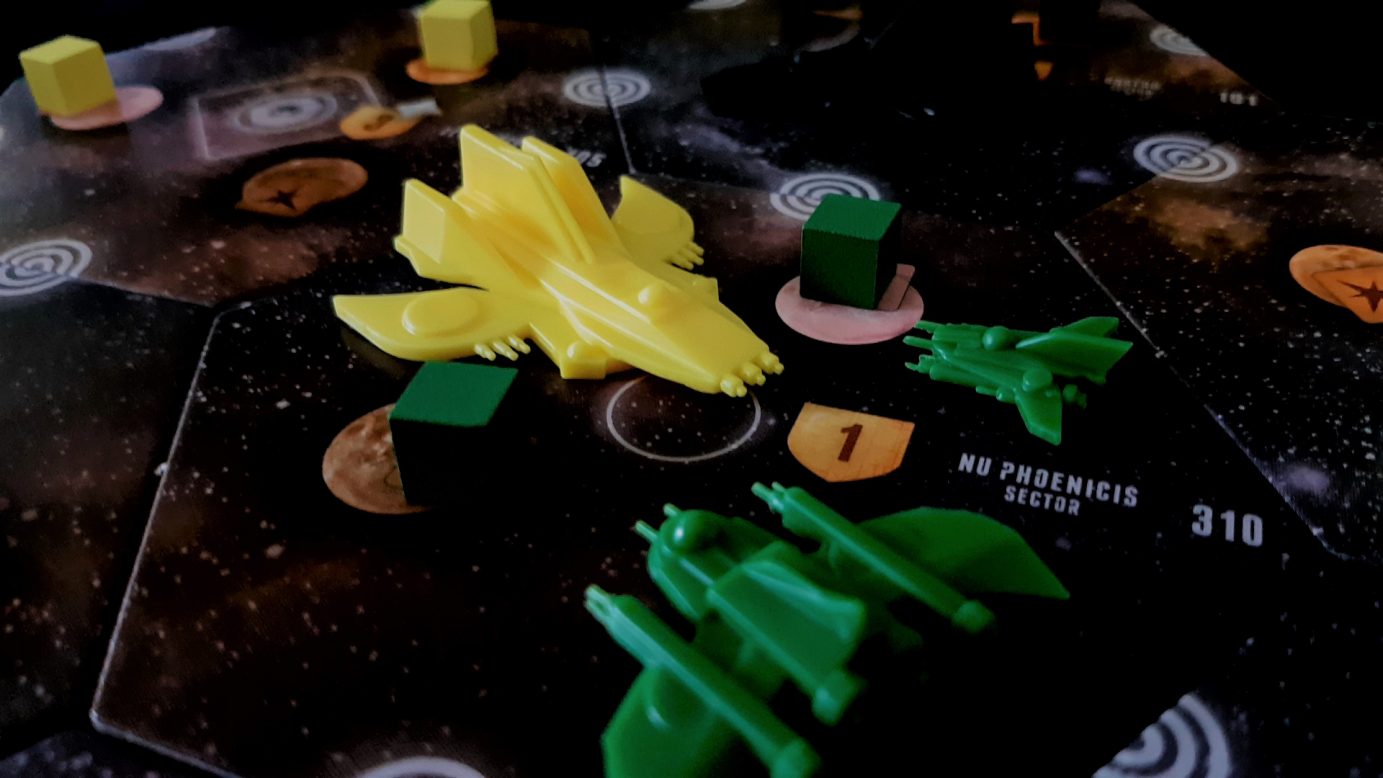Table of Contents
| Game Details | |
|---|---|
| Name | Eclipse: New Dawn for the Galaxy (2011) |
| Review | Meeple Like Us |
| Complexity | Medium Heavy [3.70] |
| BGG Rank | 79 [7.83] |
| Player Count | 2-6 |
| Designer(s) | Touko Tahkokallio |
| Buy it! | Amazon Link |
Version Reviewed
Introduction
Eclipse is an excellent game. In the olden days, a gaming mag would undoubtedly have called it a ‘stonking corker of a game’, and everyone would have known exactly how good it was. I concur. Eclipse is a stonking corker of a game. We gave it four and a half stars, noting that some elements of its design were masterful strokes of genius. The amount of mileage it gets out of the influence system is a thing of real beauty.
Still, we’re not in the position of being able to be too enthusiastic about whether you should make an effort to try it out. There are hazards still left to be dealt with. Asteroid fields. Temporal anomalies. An accessibility teardown. Let’s see how Eclipse does now that its journey has entered a more difficult part of the galactic core.
Set phasers to… analyse.
Colour blindness
Predictably, ship colour choice is going to be a problem, and become increasingly more of an issue the more players there are, and the more distinct kinds of colour blindness that need to be addressed.
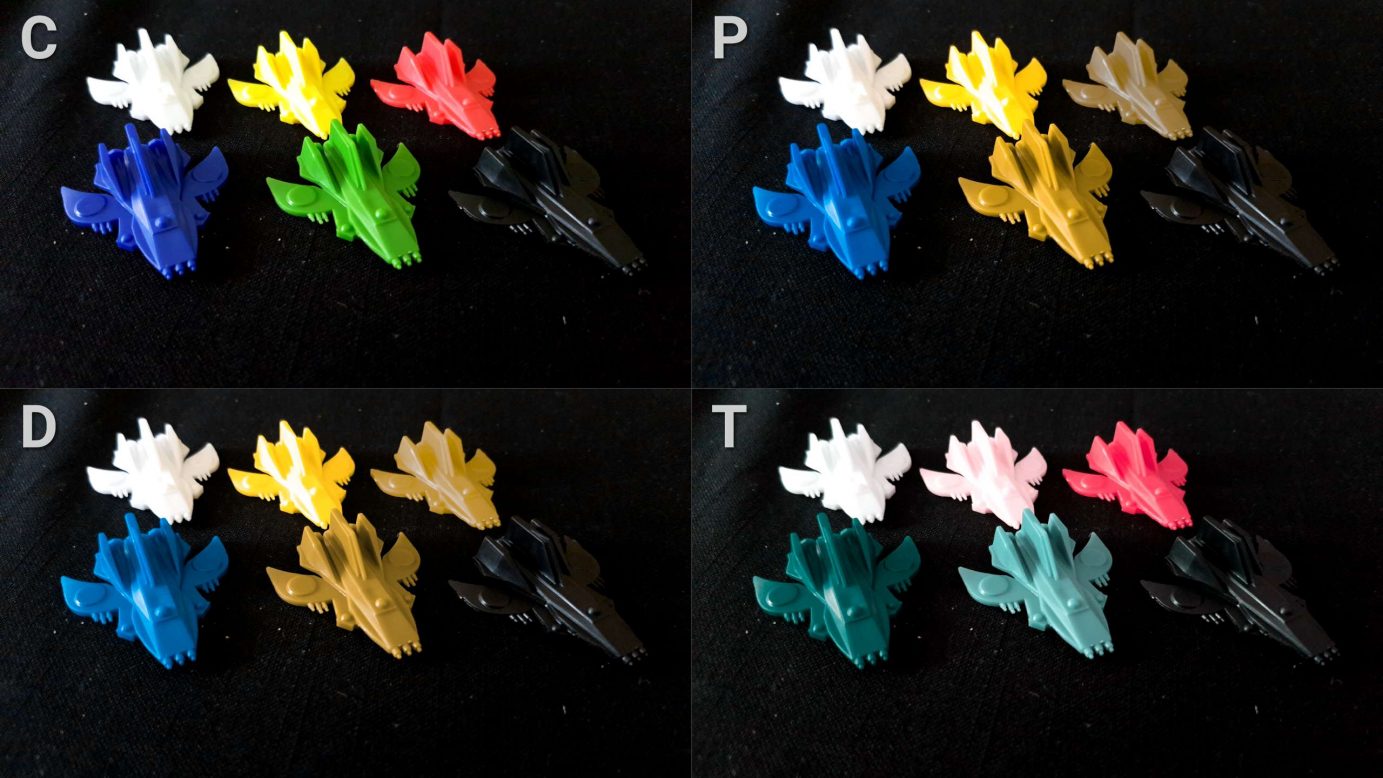
Knowing who owns which ships is important to taking sensible turns, because each ship will have different capabilities and thus the risk they present is tightly linked to their owners. You can ask of the table ‘Which ship is that’ but that indicates a kind of nervousness that might have an impact on everyone. Inquiring of game state might well raise tensions.

These colours are used too for the cubes that indicate ownership of planets, and again this is an issue. There can be few galactic faux pas quite as consequential as invading one player thinking they were another, and realising they’re the ones with the planet-killing dreadnoughts next door to your favourite sectors. You can’t replace ships with other tokens because their specific profiles link to their technological configurations. It’s important people can tell what ships each model are supposed to be.
The game state soon becomes large and difficult to parse, especially when ships and cubes need to be taken into account at the same time.
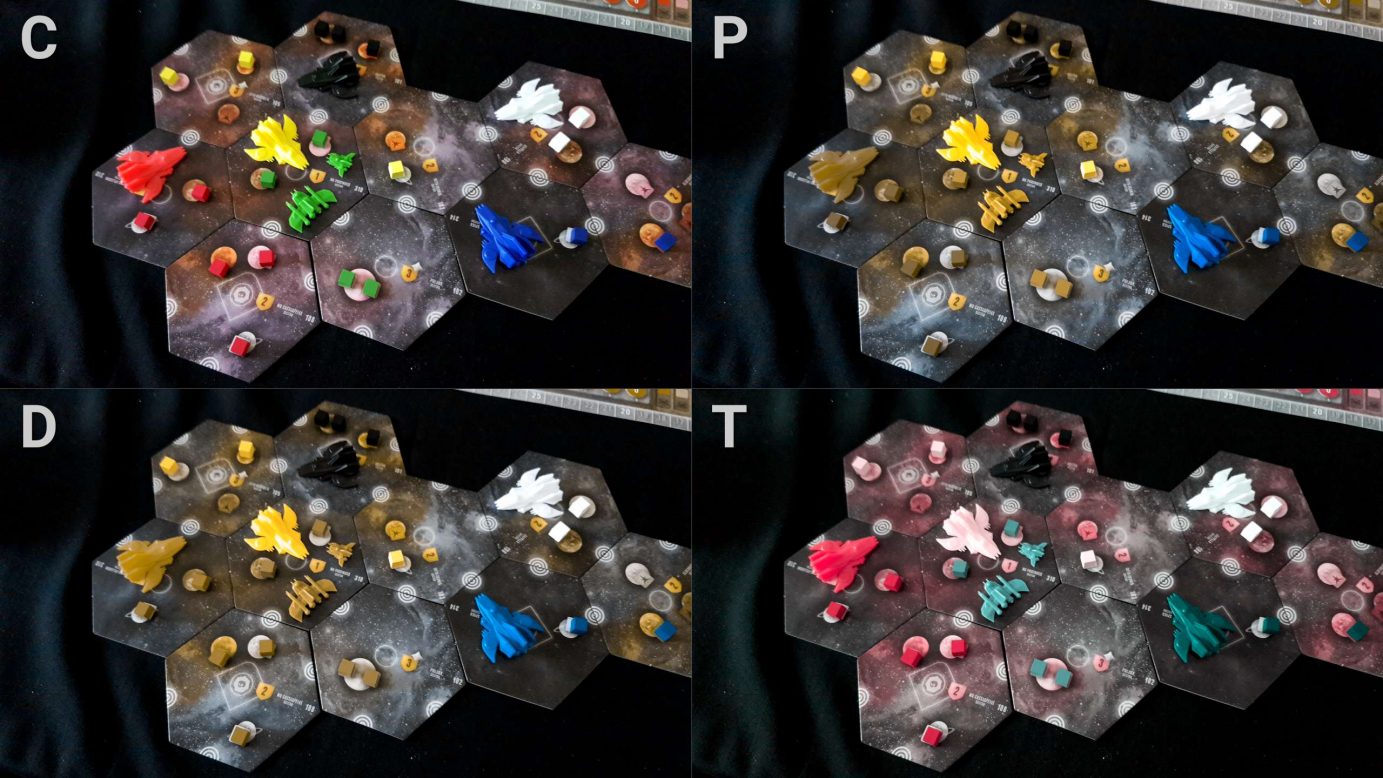
Colours are also used to indicate the type of planet available in a sector, and these are not optimal for people with all kinds of colour blindness. They’re even occasionally an issue in circumstances of poor lighting.
However, none of this is to say the game is unplayable. At lower player counts it will likely be possible to arrange a suitable combination of colours, and at a full player count close inspection will often be enough to differentiate. Although again, that’s something that well might raise tensions at the table.
We’ll tentatively recommend Eclipse in this category. Just.
Visual Accessibility
There’s a lot of information presented only visually. This includes:
- The type and disposition of planets in a sector.
- The wormholes that link sectors together, and thus the transit paths permitted
- The technologies available for purchase, and the ones installed on ships
Others give tactile clues as to presence, but not to ownership:
- The number and type of ships present in a system
- The number of alien ships in a sector
- The colonies in a sector
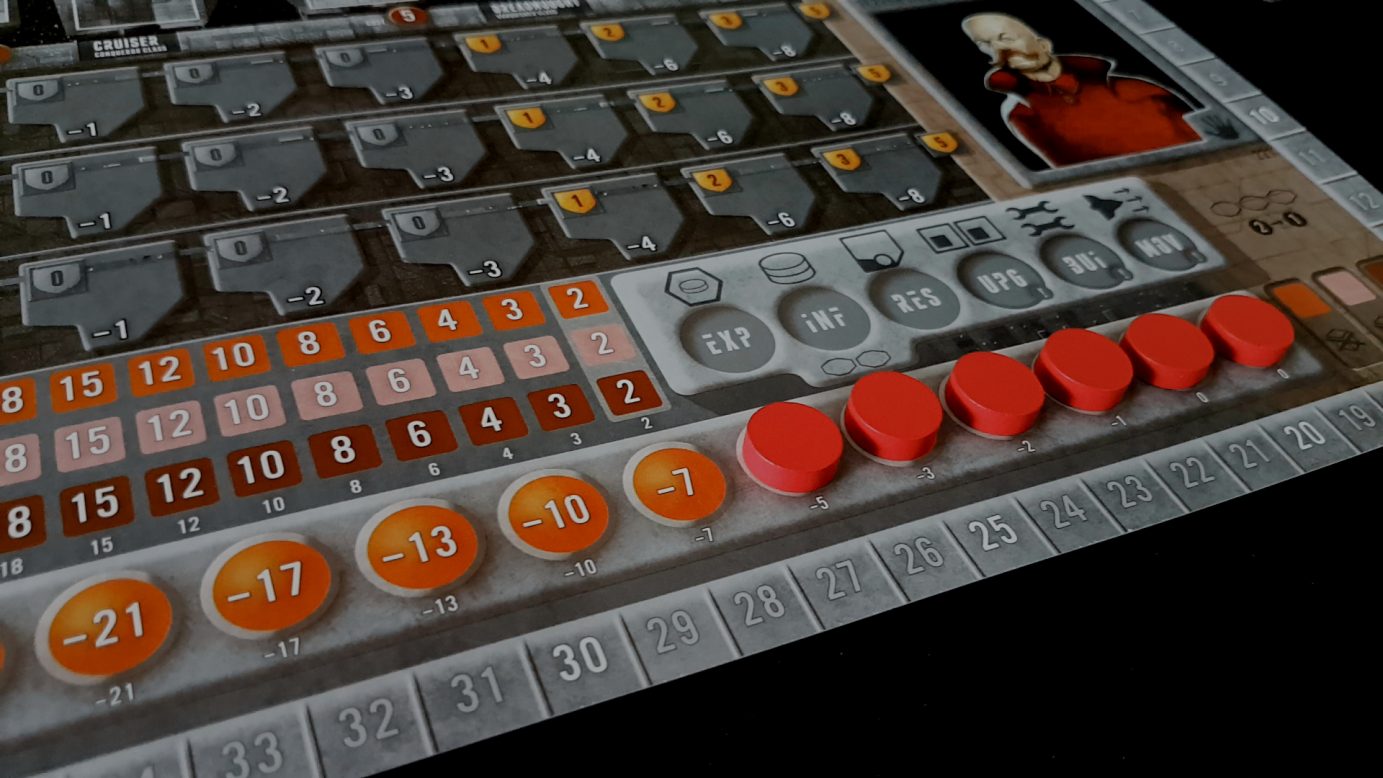
And other parts of the game component set give full coverage of game state:
- Influence markers on a player’s board
- Colony cubes available for spending
- Number of technologies in the marketplace
It would be possible for a player with total blindness to inquire of much of this, but the problem would be meaningfully relating it all in context. The game map in Eclipse gets big and complicated. Even just the valid movement paths can become very complex, and that determines the ease with which ships can fly to remote parts of the galaxy.

The game map can sprawl in many directions depending on who is doing the most exploring, and deciding whether or not to add a hex to the map depends on how its available planets and resources maps on to the influence available to players. Every round of the game, the whole state is likely to shift and the implications are significant. A ship moving a single sector can wildly change the balance of power everywhere.
For a player with total blindness, it seems like it’s just far too much to track and hold in mind in a form that would permit meaningful decision making.
For players with less severe visual impairments, the visual profile of the board has some good and bad elements. Some players will be very well contrasted and their influence relatively easily assessed. White shows up very well against the black of space, unsurprisingly.

Other player colours, absent easy visual inspection, acquire stealth properties by virtue of their poor contrast against tiles. Black against black, again unsurprisingly, is not a good combination designed to provide easy identification.
Closely examining the game state is possible for players with minor visual impairments, but again the impact of information is often across the entire map. Knowing that one wormhole connects to another may have massive implications, and missing that information likewise can be devastating.
The problem here is common in large and complex games – it’s often possible to acquire key information in its raw form, but understanding its meaning requires a much more wide-ranging consideration taking into account multiple different factors. Player X upgrades their dreadnoughts to have a Tachyon drive. They can now move three sectors per move. Does that put you at risk? That depends on the wormholes. Do they have another target in mind? That depends on the sectors. Can they afford an assault on a rich world? That depends on the influence, and so on. I suspect understanding of the game state here for those with visual impairments is only ever going to be fragmentary.
We don’t recommend Eclipse in this category.
Cognitive Accessibility
The nature of the influence system and how it’s threaded through and into every mechanism creates a game that I suspect is impossible to play for any player with significant cognitive impairments. The connections between systems is masterful and intricate, but mistakes are massively costly and you don’t even necessarily know they’re mistakes until it’s too late. You might claim a sector that looks important, only to find it means you no longer have enough turns available to gear up your ships to repel the attack you encouraged. You might upgrade a ship only to find out it doesn’t actually survive in battle because of an opponent’s missile-sled design. Every single action you take has to be done in relation to a sort of mental Gantt chart. You claim a valuable sector with three habitable worlds. None of them make more money available, so to claim it you need to explore and lose an influence bar. Two bars to conquer one system, and the cost will persist into the next rounds. Is that worth doing? Difficult to say.
It’s all just too… delicate. Consequences are hidden and long term. Strategic and tactical thinking massively important. Numeracy too is hugely stressed, both in terms of straight-forward arithmetic and in terms of the implicit probabilities of battle. But even more so – they’re stressed in understanding the impact of your decisions on the algorithms of play. I mentioned in the review that this is a game of holding gain and decay curves in mind – that’s cognitively costly even if you do understand how to arrive at the conclusions.
This single observation alone is enough for us to suggest players with fluid intelligence impairments stay far away from Eclipse, but there are a whole load of others that would take it beyond an F grade if we continued onwards.
For those with memory impairments alone, it’s a simpler game than something like Exodus but there are still a lot of rules. The memory cost of the more ‘streamlined’ elements are the same as outlined above – enacting those ‘straightforward’ systems needs a complex model of the game rules and game state to be held in mind and manipulated over the long term. Being able to work out the implications of one fewer bar of influence (or indeed, one more bar of influence) needs you to have a shrewd idea of at least the next round of the game, but ideally more.
We don’t at all recommend Eclipse for those with memory impairments, and as previously said – absolutely avoid it if fluid intelligence impairments must be taken into account.
Emotional Accessibility
There’s a lot of conquest and combat in Eclipse, and not all of it against non-player agents. It’s possible for someone to come in to a valuable sector, wipe out your colonies, and take over. In the rulebook this is referred to as returning destroyed cubes to the graveyard so there’s not a lot of ambiguity there. You will sometimes be the subject, or perpetrators, of galactic genocide.
It’s possible that deadly engines of war that took you several rounds to create will be destroyed with unlucky dice rolls. It’s possible you’ll find yourself way behind everyone else just because the random sectors you drew were terrible. It’s possible to design ships that cost you many turns and end up being lemons. It’s possible to have control of so many sectors that you can’t do anything. Managing all of this is likely to be a significant emotional burden on a player.
PvP is explicitly targeted, and it’s encouraged by the design of the game – both in terms of the value of territory but also through the awarding of points. It’s possible that the consequences of losing a sector will be catastrophic, too – if you have a set of rich worlds that are subsidising your empire’s size, losing them means shrinking influence that makes it very difficult to undo the damage done. Players can be eliminated from play under rare circumstances. What’s more likely is that players are left unable to meaningfully rebuild while their opponents consolidate power and occasionally carve up their most lucrative territory.
We don’t at all recommend Eclipse in this category.
Physical Accessibility
There are a lot of cubes and ships on the game board at any time. Sectors may also have monoliths and space stations depending on tech opportunities. However, these tend to be relatively fixed in place and while very large combats may occur the nature of the movement rules tends to restrict this. A move action will move two or three ships at a time, so there’s a logistical cost to bringing huge fleets into a battle. As such, the board is a little easier to work with than in something like Exodus: Proxima Centauri.
Verbalisation is possible but not supported, but there’s less need here than in Exodus to disambiguate ships. Damage is repaired at the end of combat so, as long as a ship exists on the map, it’s at full strength. ‘Move a dreadnought’ doesn’t need anyone to give any more information than its sector since all matching ships will be equivalent.

Sectors are named and also numbered, which permits for them to be referenced directly. Planets are identical based on colour, although some have specialist slots that are only available when a particular technology is researched. All of this can be leveraged when issuing instructions.
However, the name of sectors is provided in a small font and hexes at the far ends of the galaxy will likely be impossible to see unless someone can get up and closely inspect. They’re also not particularly memorable or distinctive. ‘Nu Phoenicis’ has no features that make it particularly memorable over, say, ‘Sigma Draconis’. They have distinct compositions of planets and available colonies but no notable landmarks.
Still, the presence of assets and resources can also serve as a marker of disambiguation. ‘Take my farthest dreadnought and move it’
Each hex will only have a small number of valid routes it permits, and if necessary these can be identified by number, direction, or even exhaustive indication.
We’ll recommend, just, Eclipse in this category.
Socioeconomic Accessibility
The manual defaults to masculinity in the text, which is always a shame. It does though provide a number of factions and a large proportion of these are Terran (Earth). These include men and women in a few identifiable ethnicities. It does skew more heavily towards white men than otherwise. Other races are available, but it’s more difficult to judge on the gender, ethnicity and otherwise of fictional alien species. The Mechanema have a leader that is very reminiscent of Seven of Nine though.
The box shows a number of these different choices on the front.
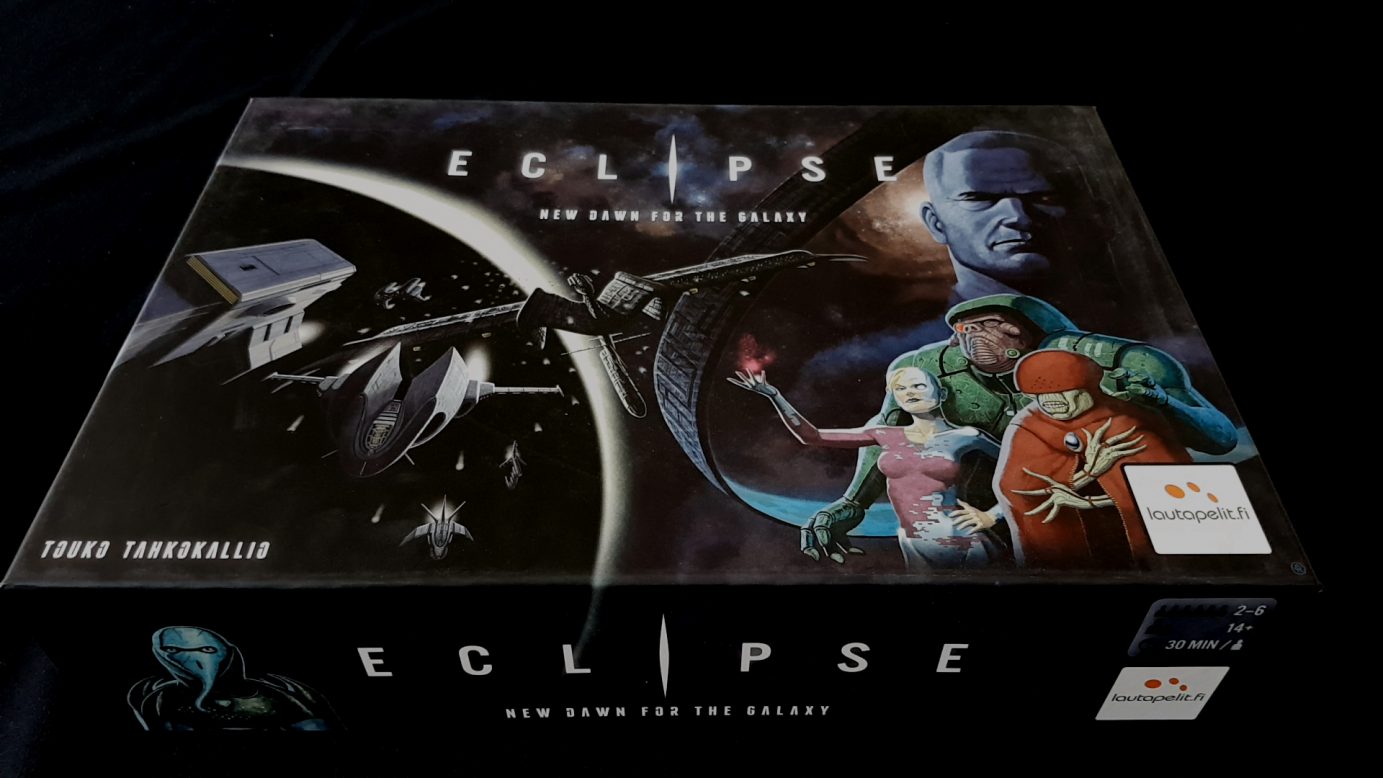
I suspect that this edition of the game is currently out of print, and that’s always awkward when it comes to a teardown. At the time of its writing it was available for approximately £60 which seems a reasonable price for a game of this quality and sophistication. I’ll amend this section if and when I ever get a chance to see what has changed in the new edition that is coming next year.
We can’t recommend Eclipse in this category, but we’ll keep an eye out for reasons to change that grade.
Communication
There are some explicit rules for handling diplomacy in the manual, and they tend to occur at the point of connecting wormholes. There’s no complex interleaving of motivations or sleight of hand alliances like you’d see in Exodus. You can play the whole thing in chilly silence if you like. There’s some small need for literacy but it’s not excessive, and iconography is used liberally to limit the expectation.
We’ll recommend, just, Eclipse in this category.
Intersectional Accessibility
Mmm… with a teardown this critical we can fall upon the usual cop-out – consider any intersection to be reason to discount the game from consideration. Physical impairment combined with colour blindness for example will make close inspection of ships more fraught. Physical impairments intersecting with communication impairments will make negotiation and articulation of verbal instructions trickier. It’s all on a razor edge anyway, so assume it falls the worst way possible.
It’s also a very meaty, time consuming game – you’ll easily be pushing three hours at a full player count and likely more if everyone is investing sufficient thought into the game. That’s a long time to be sitting and it’s easily enough to be a problem. It’s not even really a game where people can drop out unless they just want to be the remnant graves of an ancient civilization. It’s certainly possible to handle the game like that but it would leave some players better or worse off depending on their ability to harvest the resources left behind. And, at that point, there’s absolutely no way someone could reasonably tag back in after a rest.
Conclusion
Ah well. I had hoped Eclipse: A New Dawn for the Galaxy would have been a game that was also very accessible so that I had a reason to recommend it over Exodus: New Dawn, but I confess I knew going in that it wouldn’t be so. Both Eclipse and Exodus are excellent games in this vein, and neither is especially more, or less, accessible than the other. Both are a hard sell to disabled gamers.
| Category | Grade |
|---|---|
| Colour Blindness | C- |
| Visual Accessibility | E |
| Fluid Intelligence | F |
| Memory | D |
| Physical Accessibility | C- |
| Emotional Accessibility | E |
| Socioeconomic Accessibility | D |
| Communication | C |
There’s just so much going on in games like this, and such an intense competitive atmosphere, that big improvements in some of these categories seem impossible. However, there are certainly small efficiencies available here and there. Colour being an obvious area for concern, as is the largely undifferentiated terrains. Throw in some nebulae or asteroid fields or such. Make the tiles as memorable as the names. Get NASA involved. They know how to brand things.
Eclipse is a genuinely excellent game, and that’s why we gave it four and a half stars in our review. It didn’t come out of the teardown with much love, and that’s just the way things go on occasion. There’s not a lot of reason to be hopeful that playing it would be an enjoyable experience for anyone with accessibility concerns, and that’s always a shame when the game itself has such a compelling and enjoyable design.
A Disclaimer About Teardowns
Meeple Like Us is engaged in mapping out the accessibility landscape of tabletop games. Teardowns like this are data points. Games are not necessarily bad if they are scored poorly in any given section. They are not necessarily good if they score highly. The rating of a game in terms of its accessibility is not an indication as to its quality as a recreational product. These teardowns though however allow those with physical, cognitive and visual accessibility impairments to make an informed decision as to their ability to play.
Not all sections of this document will be relevant to every person. We consider matters of diversity, representation and inclusion to be important accessibility issues. If this offends you, then this will not be the blog for you. We will not debate with anyone whether these issues are worthy of discussion. You can check out our common response to common objections.
Teardowns are provided under a CC-BY 4.0 license. However, recommendation grades in teardowns are usually subjective and based primarily on heuristic analysis rather than embodied experience. No guarantee is made as to their correctness. Bear that in mind if adopting them.
